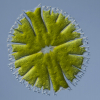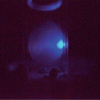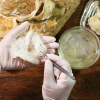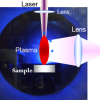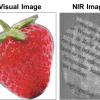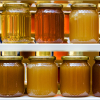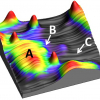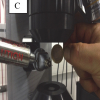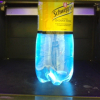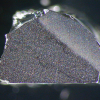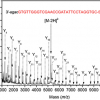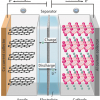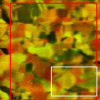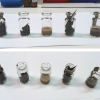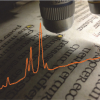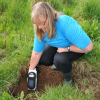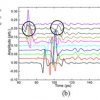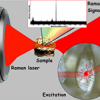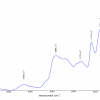Articles
In this article the question of the certification of calibration samples for the characterisation of advanced thin film materials is addressed within the framework of reliable process control or quality management purposes. Reference measurement techniques can be used in order to address the gap in appropriate certified reference materials (CRMs) for thin film analyses. They allow for qualifying out-of-production samples originating from an operating production line as calibration samples. As a template for this procedure, CIGS [Cu(In,Ga)Se2] layers, that are absorber layers for high efficiency thin-film solar cells, have been used for establishing and validating reference-free X-ray fluorescence (XRF) analysis and Auger-electron spectroscopy (AES) as reference measurement techniques.
Different spectroscopic techniques have been combined to provide additional and complementary information for decades. Increasingly, this is being expanded beyond just two techniques and may include spatial/imaging information as well. All of which bring their own challenges. In “Multimodal imaging of cells and tissues: all photons are welcome”, David Perez-Guaita, Kamila Kochana Anja Rüther, Phillip Heraud, Guillermo Quintas and Bayden Wood report an example of these new approaches. They look at the use of infrared, Raman and X-ray fluorescence spectroscopies to obtain combined imaging data of whole algal cells and discuss how to overcome the challenges.
Dmitry Gakamsky and Anna Gakamsky describe how fluorescence may be used to diagnose cataracts in human eye lenses. Further, it may also be able to grade cataracts and monitor the disease’s progress, which may help discover metabolic and ambient factors that influence the progress of the disease.
Edible bird’s nest (EBN) is a highly valued food, especially in China. Due to this, there is the potential to bulk out the EBN with artificial additives to receive a higher price. This article shows yet another way in which spectroscopy is used to detect adulteration of food and prevent fraud in a quick and cost-effective manner.
We all know how spectroscopy and other analytical technologies have played important roles in detecting fraud and in authentication. Paper collages, or photomontages, are part of the art market that is seeing much interest amongst collectors. It is difficult to detect forgeries just through expertise. The use of NIR imaging offers a number of ways to identify forgeries or authenticate the collage non-destructively; from determining the glue used to the revealing of printing on the back of the pieces or paper, which often have been taken from books and magazines.
X-ray spectroscopy techniques have some advantages over other atomic spectroscopy techniques in the analysis of foods, for instance in not requiring significant sample preparation. Amongst these, TXRF has higher sensitivity and limits of detection in the ng range. The authors look at the analysis of a number of very different foods, including seafood, honey and vegetables.
This article demonstrates the capability of the near-field method to probe polymer microspheres within a protein matrix, and we present the first IRSR photothermal near-field Fourier transform infrared (FT-IR) spectrum from within an individual biological cell, which establishes the feasibility of hyperspectral mapping at sub-micrometre resolution in a practical timescale.
The CAL(AI)2DOSCOPE (Cryogenic Absorption/Luminescence Alignment Independent Alternative Intermittent Detection Optical µSCOPE) is a microspectrometer that was constructed with the aim to facilitate the correlated investigation of absorption and fluorescence emission properties of nanovolumic protein samples under modulatable actinic illumination.
Whilst the major components of food are usually non-fluorescent, many minor food components that affect its nutritive, compositional and technological quality are fluorescent. Given its sensitivity, ease of use and non-destructive nature, this makes it useful in many applications around monitoring food processing and in fundamental food research.
This article is is a fascinating look into the use of laser ablation inductively coupled plasma mass spectrometry in forensic examination of glass fragments. These are often associated with crime scenes and easily “attach” to any people near them. Thus, they can be used to link criminals to their crime and to provide information on where a glass fragment might have originated.
This article gives a most useful overview of the analysis and sequencing of nucleic acids by matrix-assisted laser desorption/ionisation mass spectrometry, which should interest all readers and may well serve as a useful tutorial article.
Lithium ion batteries power most of the electrical devices we rely on every day. As well as mobile phones, laptops and tablets, they are finding increasing use in vehicles, with electric cars not uncommon on our streets. This article is from a young scientist who has won help for her research through an instrument company’s support programme. You can find out more, read the article and even apply yourself.
There are a number of advantages of Raman microspectroscopy, including its the ease of its application, as in many cases no or very little sample preparation is needed and the experiments are performed at atmospheric pressure.
The study of metabolites in our sewage systems is not new, but there are particular difficulties with identifying the metabolites from new psychoactive substances, or “legal highs”. The authors describe a wide range of sample collection methodologies and their analysis with mass spectrometry.
It is not every issue that one of our articles starts with a quotation in medieval English, and it is appropriate as two of our articles cover the use of spectroscopy in cultural heritage. This is yet another field where the rich information provided by spectroscopy, along with its non-destructive nature (for many techniques), portability and ability to generate chemical images make it the answer to many questions. Kate Nicholson, Andrew Beeby and Richard Gameson are responsible for the medieval English at the start of their article “Shedding light on medieval manuscripts”. They describe the general use of Raman spectroscopy for the analysis of historical artefacts, and, in particular, their work on medieval European manuscripts and 18th century watercolour pigments. They stess the importance of checking the actual laser power density to avoid damage to priceless artefacts.
Once again developments in portable instruments lead to greater ease of use and the ability to measure far more samples. They describe the application of FT-IR, NIR and XRF spectroscopies to the development of the National Soils Inventory of Scotland, and their work in developing the use of handheld instruments, particularly FT-IR spectrometers.
Terahertz spectroscopy and imaging of Paleolithic cave etchings, 14th century paintings in a church and a mid-20th century Italian painting are all described. This helps demonstrate the versatility of the technique as well as its potential in cultural heritage preservation.
This article looks at the use of Raman and XRF spectroscopies to investigate the different deterioration processes caused by marine aerosols. These techniques can detect the decay compounds and the original composition of the different materials from historical buildings close to the sea, which can then be used to explain the reactions that take place on them. This helps in the development of remedial actions and preventive conservation strategies for historical buildings.
Benchtop mid-IR and NIR as well as portable NIR instruments are used for quick and non-invasive quality control of this traditional Chinese medicine. Adulterations could be detected, as well as the raw herbs and different sources of the Si-Wu-Tang. The success of the mobile NIR instrument is particularly interesting due to the growing interest in such technology for its ease-of-use and cost.

![Illustration of a thin film solar cell based on a CIGS [Cu(In,Ga)Se2] absorber layer](/sites/default/files/styles/thumbnail/public/articles/Thin_Film_30-1_F1w.jpg?itok=oNor7cmJ)
